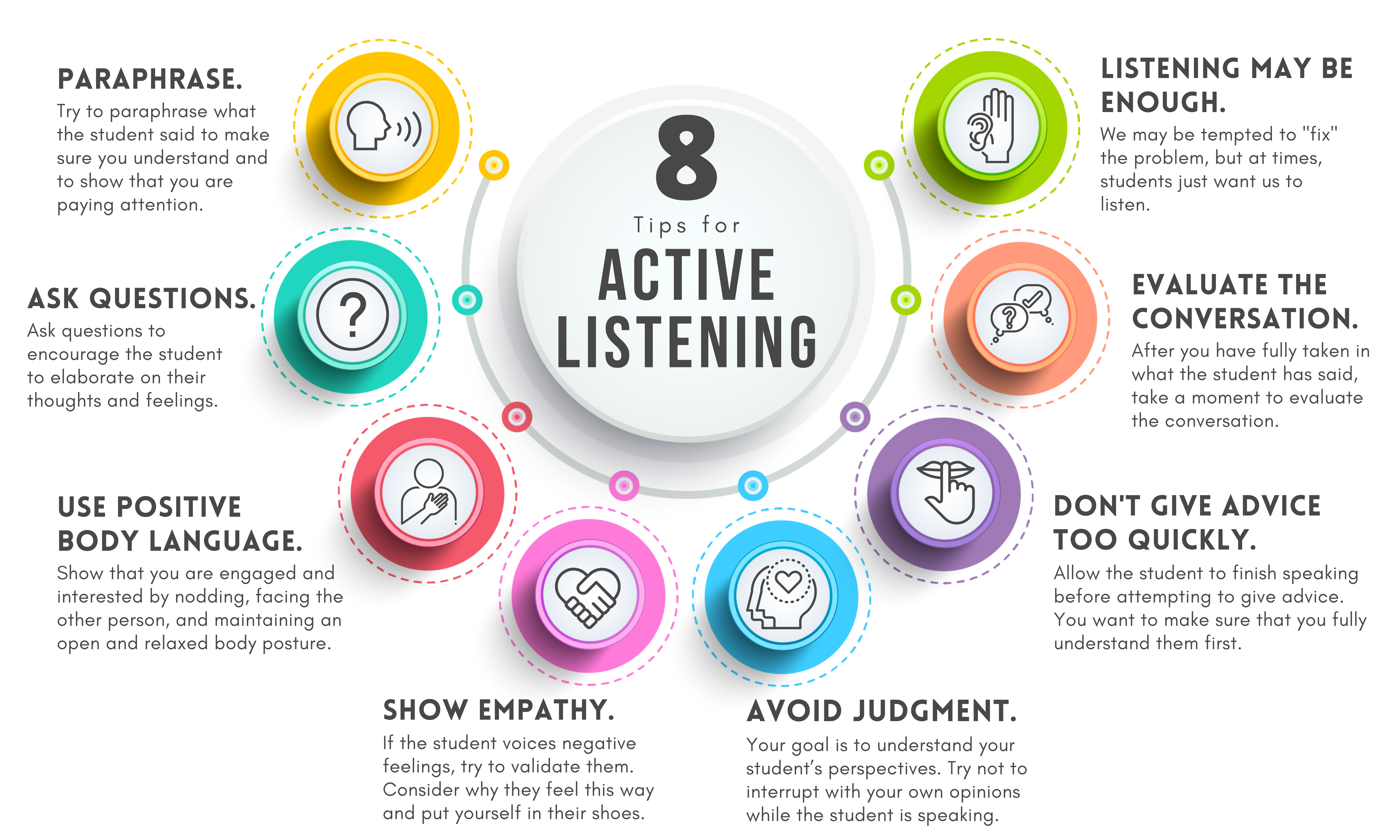
Creating a personal action plan for active listening is a proactive way to improve this essential communication skill. An action plan provides a structured approach to setting goals, implementing strategies, and tracking progress. Here’s how to create a personalized action plan for active listening:
Step 1: Self-Assessment
Reflect on Current Listening Habits: Begin by reflecting on your current listening habits and skills. What are your strengths and weaknesses when it comes to active listening? Are there specific situations or contexts where you struggle to listen effectively?
Identify Goals: Define clear and specific goals for improving your active listening skills. For example, you may want to become a better listener in team meetings, resolve conflicts more effectively, or enhance your communication with clients.
Step 2: Strategies and Techniques
Select Active Listening Techniques: Research and identify specific active listening techniques that align with your goals. Common techniques include paraphrasing, asking open-ended questions, providing verbal affirmations, and practicing empathy.
Tailor Techniques to Your Goals: Customize these techniques to suit your specific goals. For example, if your goal is to improve client interactions, focus on techniques like empathetic listening and asking probing questions to understand client needs better.
Step 3: Implementation Plan
Set Implementation Milestones: Break down your active listening goals into smaller, manageable milestones. Assign a timeline to each milestone. For example, if your goal is to become a better listener in team meetings, set milestones for specific meetings or discussions.
Practice Regularly: Consistent practice is essential for skill improvement. Dedicate time to practice active listening in various scenarios, both professionally and personally.
Feedback Mechanism: Establish a feedback mechanism to collect input from peers, colleagues, or mentors. They can provide valuable insights into your progress and areas for improvement.
Step 4: Accountability and Tracking
Accountability Partner: Consider partnering with someone who can hold you accountable for your action plan. This could be a colleague, mentor, or friend who is also interested in improving their active listening skills.
Track Progress: Keep a journal or digital record of your active listening experiences. Document situations where you successfully applied active listening techniques and note any challenges or lessons learned.
Step 5: Evaluation and Adjustment
Regular Evaluation: Periodically evaluate your progress against the milestones you set. Assess whether you have achieved your goals or if adjustments are needed.
Adjust and Adapt: Be open to making adjustments to your action plan based on your evaluation. If you encounter new challenges or opportunities, update your strategies accordingly.
Continuous Learning: Stay updated on the latest research and resources related to active listening. Attend workshops, read books, or take courses that can further enhance your skills.
Step 6: Celebration and Recognition
- Celebrate Achievements: Celebrate your successes and achievements in active listening. Recognize your efforts and the positive impact it has on your communication and relationships.
Step 7: Share Your Knowledge
- Share Your Knowledge: As you improve your active listening skills, consider sharing your knowledge and experiences with others. This can reinforce your own learning and benefit your colleagues or team members.
Example of an Action Plan:
Goal: To become a more effective listener in client meetings.
Strategies and Techniques:
- Practice empathetic listening to better understand client needs.
- Ask probing questions to gather detailed information.
- Use verbal affirmations to show engagement and understanding.
Implementation Plan:
- Milestone 1: Apply empathetic listening in the next three client meetings within the next month.
- Milestone 2: Incorporate probing questions in the following two client consultations.
- Milestone 3: Use verbal affirmations consistently in all client interactions over the next three months.
Accountability: Partner with a colleague to provide feedback and hold each other accountable for active listening improvements.
Evaluation: Review progress and gather feedback from clients and colleagues after each milestone. Adjust techniques as needed.
Creating a personal action plan for active listening is a proactive step toward enhancing your communication skills and building stronger relationships in both professional and personal settings. Regular practice and self-reflection are key to continuous improvement.